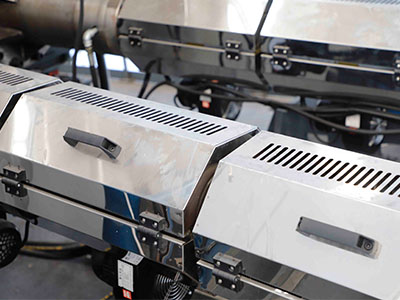In the intricate world of hollow blow molding machines, the type of extrusion screw plays a pivotal role in determining the quality of the end products. Whether crafting watering cans, jerry cans, or fuel tanks, manufacturers must carefully consider the specifications of the extrusion screw to ensure the production of high-quality plastic containers.
In this article, we delve into the key requirements that any extrusion screw must meet to produce top-notch products in hollow blow molding machines.

The Significance of Extrusion Screws:
Extrusion screws are the unsung heroes of the blow molding process. They play a critical role in shaping and forming molten plastic into various container types. To achieve optimal results, manufacturers must select extrusion screws that align with the specific needs of their production process.
Types of Extrusion Screws:
There exists a myriad of extrusion screws, each designed to cater to different materials and container specifications. From single-flighted to double-flighted, and from barrier screws to mixing screws, the options can be overwhelming. Understanding the intricacies of each type is crucial in making an informed decision that aligns with the desired end product.
Key Requirements for Extrusion Screws:
Regardless of the type, any extrusion screw used in a hollow blow molding machine must meet certain requirements to ensure the production of high-quality plastic containers. These include:
1. Material Compatibility:
The extrusion screw must be compatible with the materials used in the manufacturing process, such as HDPE, PE, and PP. This ensures a seamless and efficient molding process.
2. Size and Capacity:
Matching the size and capacity of the extrusion screw to the desired container specifications is essential. This ensures that the machine can handle the production volume without compromising on quality.
3. Versatility:
A versatile extrusion screw is crucial for manufacturers producing a diverse range of containers. The ability to adapt to different materials and product types enhances the machine’s flexibility and market competitiveness.
4. Precision and Consistency:
Precision in molding is paramount to achieving consistent product quality. The extrusion screw must be designed to provide accurate and repeatable results, reducing variations in the final products.
5. Durability and Maintenance:
Long-term success in blow molding hinges on the durability of the extrusion screw. Selecting a robust and low-maintenance screw contributes to operational efficiency and cost-effectiveness over time.
Choosing the right extrusion screw for a hollow blow molding machine is a decision that should not be taken lightly. Meeting the specific requirements outlined above ensures that manufacturers can produce high-quality plastic containers consistently.
As the industry continues to evolve, staying informed about the latest advancements in extrusion screw technology is key to maintaining a competitive edge in the market. Manufacturers who prioritize these considerations are well-positioned to deliver products that meet and exceed quality standards, setting the stage for long-term success in the dynamic world of blow molding.
